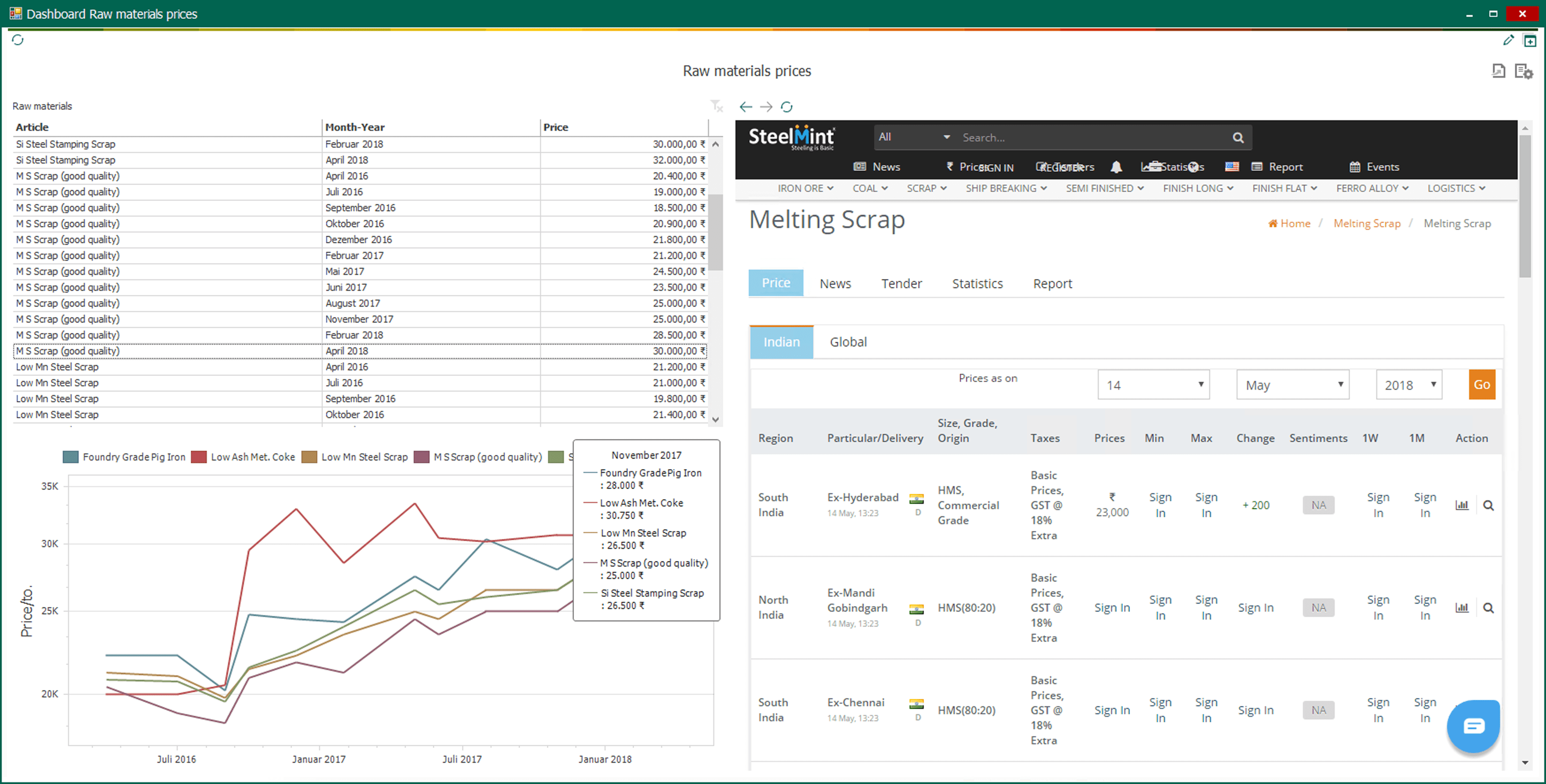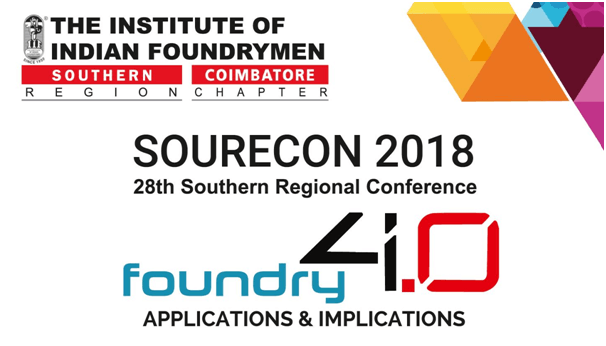BY
MR BHUSHAN BHATT – BHAUNAGAR, INDIA – AUTO-DESIGN-ONLINE; EMAIL: <>
AND
The REAL and VIRTUAL world are increasingly growing together
The buzzword is “Industrie 4.0” (note the ending with “ie” since the expression was indeed invented in Germany) – the fusion of modern information and communications technology (= cyber systems) with production environments – has become an essential development and is currently a much-discussed topic.
Another much-discussed topic is the increasing raw material cost all foundries are facing, especially in India and APAC (refer FOUNDRY March / April 2018, page 112 and Figure 2 & 3)
On the way to “Casting 4.0”!!
In the metal casting industry – ancient traditions carried forward by generations and huge amounts of experience WILL BE replaced by modern state-of-the-art software-based solution technologies, making the industry attractive to young talent, providing room for legacy renewal and helping to rejuvenate. There is a BIG VISION and these are the steps that have to be taken, no matter what, in order to achieve:
- DIGITIZATION / DIGITALISATION (=> Digital Transformation)
- INTEGRATION
- AUTOMATION
We are coming from a viewpoint where many explain the theory of “Foundry 4.0” / “Guss 4.0” / “Die-Casting 4.0” / “whatever-you-call-it – 4.0” but absolutely no-one is actually asking actually WHY we are in an industrial revolution and WHY should the foundry / die-casting industry adapt?
The answer is clear:
Transparency of operations, Traceability, Productivity, and Efficiency increase on all levels as many times involved manual operations are deleting achievements. The demand is for easy to adapt processes which react to a fast-changing world and we need products/services that fulfill these requirements (Actually the product itself becomes secondary). Raising profits when margins are reduced is a worldwide trend!
Raw materials cost rise and sometimes fall, in automotive – a key driver in the „4.0-strategies“ the motto is:
Stay competitive with less waste and eliminate inefficiencies. Hence in metal casting, which is a key supplier to automotive, these „4.0 – strategies“ become a mandatory requirement and even if your foundry does not supply to automotive you will face the challenges.
We all know what the 4th IR (=Industrial Revolution) contains. The 4th IR comprises holistic IT-deployment in production engineering and establishing cyber-physical systems, as per definition. From this, we can translate requirements a foundry / die-casting environment will have to fulfill.
Requirements for a Foundry / Die-Casting environment means:
A COMMON PLATFORM FOR
- Database
- Data Analytics
- Data Visualization
- Data Interaction
- Data (and Production) Planning and Controlling as well as (auto-) scheduling
- Better Organization and Data flows internally
- Better Business externally
- Better Decision-making processes
Figure 1: Development of Raw Material Prices in INR on the left (source FOUNDRY March/April 2018 edition page 112), here linked with “SteelMint” raw material data exchange website as a secondary source.
Figure 2: Extracted from the movement of raw material prices is the development of good quality steel scrap combined with a trend development for 3 months based on a moving average. With this integrated data foundries can plan better and react faster to increased profitability when margins are thinning out.
RAW MATERIAL PRICES INCREASE – How to react with “Foundry 4.0” – technologies
Let us look at a very specific trend no-one can avoid. The increase in raw material cost for various reasons. Be it foundry grade pig-iron, low Mn-scrap, MS scrap or any raw material a foundry requires, in many cases the price increase over the past year or 2 is clearly visible and that is with or without the new GST rules in India. In recent discussion forums like the “DFG = dynamic foundry group” based out of Kolhapur or even in IIF president’s editorials the increase of raw material prices as a trend was discussed and it was also stated that many foundries do not receive enough price compensation by their customers.
Now, how can “foundry 4.0” activities provide a solution?
As explained by the end of the day it’s all about DATA. How to handle it in the most efficient way and how to react to trends and tendencies when things (here raw material prices) go the wrong way. For sure any foundry purchasing would love to have a tool that helps to “predict” the future especially what raw material prices concerns.
The more we rely on data the more we need tools / common platforms/visualization instruments and the like to ensure that this data is used for better productivity and profitability.
In figure 1 it is seen when such raw material data is available 24/7 in a foundry and it can be interlinked with any website providing similar or same information, example here is “SteelMint” but also London Material Exchange or any other is possible. The data used shall be combined with a working “prototype” of a raw material dashboard with future indicator = scenario manager (here example melting scrap 3 months and all based on the India data).
How does it work?
There are 2 major options: Either you rely on your own purchasing data from the past period (last quarter or ½ year or full year or even longer) and create a moving average into the future and project a decrease/increase of “X”-% over a period of time, this can be done using even a simple Excel sheet, but is tedious and must be manually kept updated and may or may not incur errors when typing in data. Another disadvantage is that it is not real-time data and cannot be used with an integrated system covering all activities from inquiry to delivery of castings including certificate.
OR
Alternatively – done here in figure 2 – you link your actual raw material (example: data with raw material prices from whatever raw material exchange e.g. here “SteelMint”, or “London Material Exchange” or others) with the dashboard. The data from these websites are (not yet – due to data protection laws) automatically interlinked but easily transferable. The outcome is similar but using the scenario manager to “project” a future trend and plan with an increase or decrease of “X”-% over time and the database can be chosen to be either single / combined or mixed. In addition, and only possible if the data is coming from an integrated system, THIS data can be linked to the current costing of castings and orders on hand. Castings and deliveries with higher costings can be identified and castings that were produced for clients can be looked at to check profitability. If they make losses in the post-calculation you can identify clients who you wish to contact to see if they are able to accept price changes or not, etc. The decision making is linked towards better profitability, ultimately you must be in a position to precisely know whether you win or lose $$$ on a casting.
DIGITAL CONTROL of your raw material purchase will allow you to create preventive measures in order to stay competitive and to really know and understand IF your “cost to cast” is profitable.
In addition, being in a position to predict the casting pricing future indirectly will allow you to steer the operations with greater confidence and better transparency. An integrated system like FRP® – Foundry Resource Planning Solutions, is naturally in a position to not only provide the required foundry data but also to link up dashboards and scenario manager. With better planning, a better control can be administrated.
We mentioned many times that foundry Managers of the future become IT – gurus as many computer-based technologies must be mastered in parallel, it is not enough just to know about methods and casting. As it can be seen the REAL answer in today’s world of the digital transformation of workplaces is not to ask the question “how much it costs and can I afford it?” the real question should be “how much it will cost me NOT to do it?” If raw material cost can be “predicted” via purchasing data and integrated digital “scenario managers”, then profitability and costing will go hand in hand not based on “guess-work” but “hard-facts” and hence the future of foundries to stay competitive is bright!!
We are proud to say that the image of foundry being 3D = dirty, dangerous and difficult, will change towards something like D3 = digital, dynamic and different in a not too distant future.
RGU.FRP® is proud to be part of this transformation!



